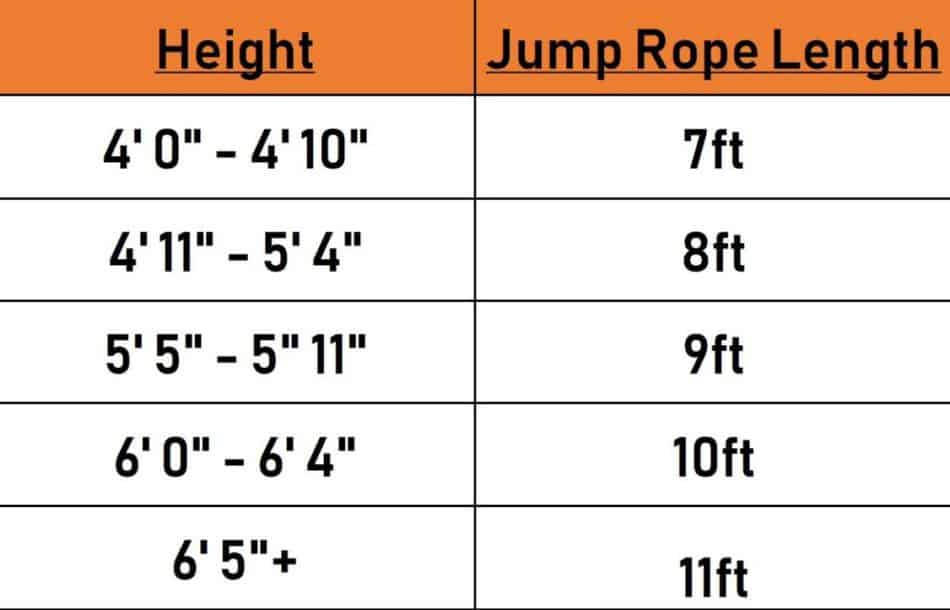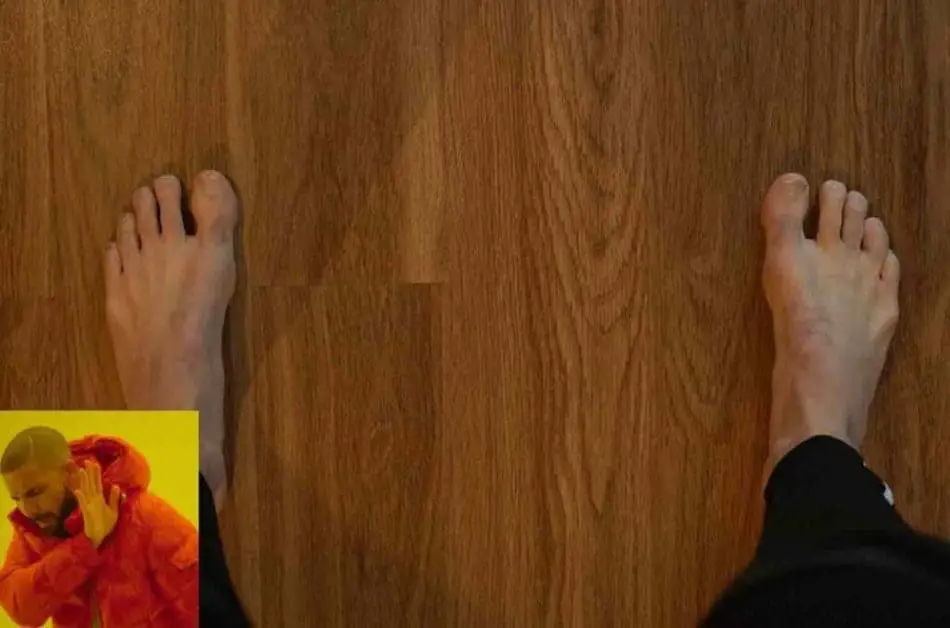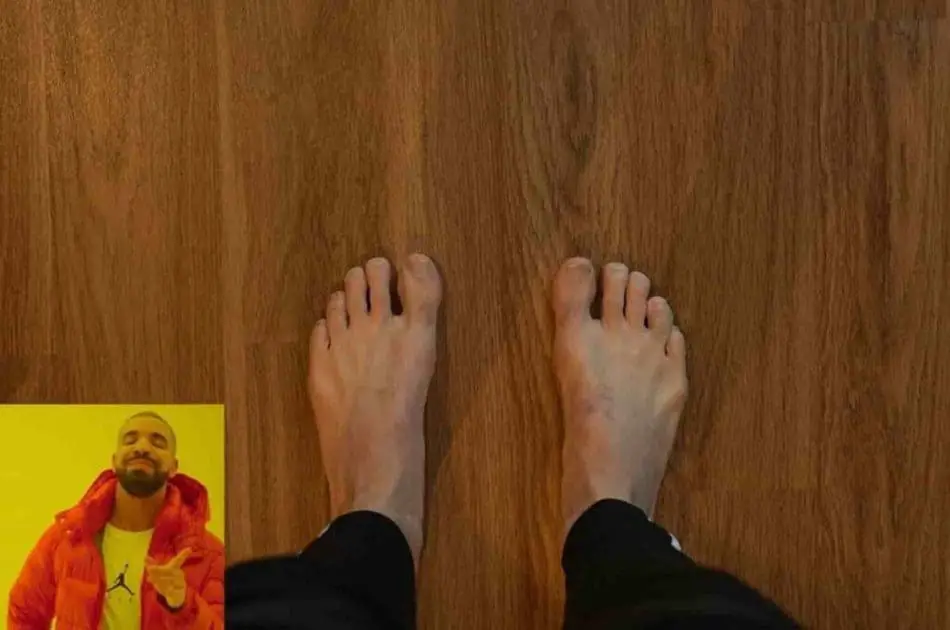I’ve been jumping rope for years, and still to this day hitting my feet with the rope is the most frustrating thing! There’s some pretty easy adjustments you can make though, to prevent this from happening.
There are 3 main reasons why your jump rope keeps hitting your feet. The most likely reason is your jump rope is too short. Another reason for hitting your feet is your feet are too far apart. And, the third most common reason for hitting your feet when you jump rope is you’re flaring your elbows.
Fortunately, all of these mistakes can be easily fixed. With some minor adjustments to either your jump rope or your form, you’ll be jumping like a pro in no time.
I’ve provided a solution to each of these scenarios in the section below, as well as a few other useful tips to help prevent other common mistakes.
Your jump rope is too long – here is the correct length
The most likely reason your jump rope keeps hitting your feet is because the jump rope is too short. This is super common, especially for a beginner. Don’t worry though, I’ve got you covered.
Take a look at the following sizing chart. Your height will ultimately determine what length your jump rope should be. These sizes will apply to probably 90% of you.

That said, there are some exceptions to these rules. Depending on what you’re doing with your jump rope you may decide to size it slightly differently.
For example, many freestyle jumpers (like Boxers) will opt for a slightly longer rope to allow for more advanced movements and transitions. The extra slack in the rope prevents it from hitting their feet when performing crossovers and double-unders.
Another scenario where someone may choose to size their rope differently is for competition, like speed jumping. As you can probably imagine, a shorter rope allows for quicker rotations. Many speed jumpers will opt for a slightly shorter rope to increase their speed.
If neither of these apply to you, stick to the jump rope sizing chart above.
When it comes to changing the length of your jump rope, that will ultimately depend on what kind of jump rope you have. I am a huge fan of adjustable jump ropes for this very reason.
You might consider picking up an adjustable jump rope if you don’t already have one. Here is one of my favorite adjustable jump ropes. It’s super affordable!
For those of you that don’t have an adjustable rope, take a look at our Illustrated Sizing Guide for more instructions on how to make those changes.
Your feet are too far apart – narrow your stance
Another mistake that causes the jump rope to hit your feet is jumping with your feet too far apart. Doing this makes tripping over your jump rope incredibly common.
This is probably one of the easier fixes though, it just takes a slight, conscious adjustment while you jump.
It’s very easy, especially as a beginner, to want to widen your stance when jumping rope. I see a lot of newer jumpers standing with their feet shoulder width apart, or even wider. Avoiding this will help you from tripping over the rope.
I like to keep my feet, specifically my big toes, no more than 6 inches apart. You’ll find that it not only prevents you from catching the rope on your feet, but your jumps become significantly more efficient.


Like with any sport, training with proper form will greatly increase the effectiveness of your performance and reduce the risk of injuring yourself. Even if you’re an experienced jumper, I’d highly suggest reviewing our article on The Jump Rope Basics for a recap on proper form.
Small adjustments like these will likely require a bit of practice, but they’ll level up your jump rope game over time.
You’re flaring your elbows – keep them tucked to your side
Flaring your elbows while you jump is another easy mistake to make, one that will likely have you tripping over your jump rope constantly. Similar to narrowing your stance, this is also an easy fix.
The main reason why flaring your elbows may cause you to hit your feet with your jump rope is because it actually “shortens” the length of your jump rope.
With your elbows out wide, there is less clearance above your head and below your feet when rotating the rope. To solve this, keep your elbows close to your hips while jumping.


Another mistake that’s easy to make, one that goes hand in hand with flaring your elbows, is the position (or direction) of your wrists.
It’s common for beginners to have the inside of their wrists facing their body, which consequently make it very difficult to bring their elbows in closer. It should be noted that in order to fix the flaring of the elbows, the position of the wrists needs to be adjusted as well.
In order to keep your elbows closer to your body you’ll need to turn the inside of your wrists outward, away from your body.
Again, all three of these mistakes are easily fixed. It just requires some practice.
Should jump rope hit the ground?
Should my jump rope hit the ground? This is a question I’m commonly asked, one I think is pretty relevant to this discussion.
For me, I tend to do a lot of freestyle jump rope. I’ll weave in various movements and transitions into a single routine. Things like double-unders, crossovers, side swipes, etc… In order for me to perform these it requires extra slack in my jump rope.
So, for me, my jump rope is always hitting the ground with each rotation.
And, honestly, even if I wasn’t doing anything fancy, I think my jump rope would always make at least some contact with the ground. I find that the sound of the rope hitting the ground helps me with my timing and rhythm.
I think the only time a jump wouldn’t hit the ground is in competitive jump rope competitions, specifically the speed rope category. These athletes are solely focused on speed and how quickly they can rotate the rope. For this, shorter ropes and less clearance are optimal.
It definitely comes down to preference and experience level though. Do what feels right for you.
Related Questions
Why does my jump rope keep twisting?
There are a two reasons why your jump rope is getting twisted or tangled. The most common reason is the jump rope is brand new and hasn’t been broken in. Another common reason for your jump rope getting twisted is how the rope was designed, specifically how the rope connects to the handles.
If you’re using a brand new jump rope, I suggest taking it out of the package a few days before using it and letting it breathe. Straighten out the jump rope and either lie it on the floor or drape it over a door.
Regarding the design of your jump rope, the only way to fix this is to get a new jump rope. Look for jump ropes that use “ball bearings”. This design is specifically made to prevent the rope from getting twisted or tangled.
